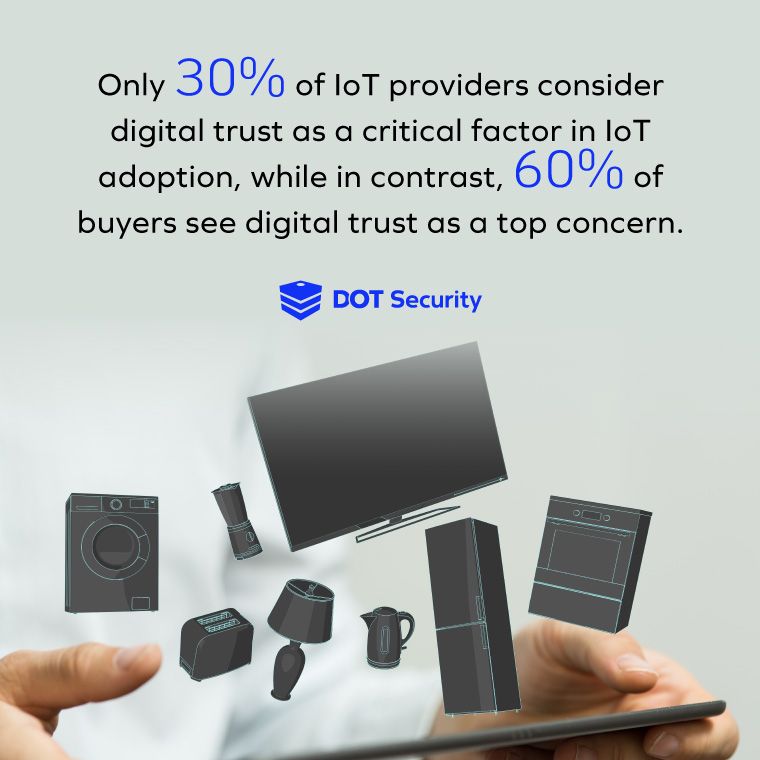Cybersecurity Consulting
5 Devices You Didn't Know Were Vulnerable
August 10, 2023
7 minutes

As our world becomes more and more digitally integrated, we’re seeing new technologies spring to life that used to only be a figment our imaginations. While this is an exciting testament to technological progress, it also comes with an entirely new set of security concerns. To examine this further, we’re going to look at some common smart devices you didn’t know were vulnerable.
Because data is so valuable, cyber criminals will go to great lengths to get their hands on information they can monetize. Protecting your data means protecting your network and mitigating risks wherever possible.
Sign up for our newsletter!
Each and every year, new devices connect through the internet of things (IoT). However, widespread implementation still hasn’t come to fruition. One of the major reasons for this is the lack of cybersecurity offered by these internet-enabled devices. Below are five common smart devices used by individuals and businesses alike and a look at their cybersecurity posture.
If you’d like to get a better grasp on the entire cybersecurity market, read DOT Security’s report, The State of Cybersecurity for Small Businesses.
1. Smart Appliances and IoT Devices
We already mentioned the internet of things and it’s growing list of devices, which now includes smart refrigerators, laundry machines, and even ovens. While these internet-enabled home appliances offer users a suite of convenient features that arguably make household chores much easier, they also offer cybercriminals additional entry points into your network.
While it may not seem very lucrative for a cybercriminal to access the data on your oven, they could usurp remote control and potentially start an unattended house fire. More likely, though, they would simply use the smart oven or fridge as a gateway into the entire network.
From there, they could bounce from device to device, until eventually hacking into your personal cellphone, or even your work laptop, which is now a much larger issue.

2. Your Smart Thermostat
Your organization may not have any smart fridges or smart ovens, but if you have a physical office, you could very well be using a smart thermostat, which are popular for business owners and homeowners alike.
The ability to control your environment's temperature from your smartphone is incredibly convenient. Not only that, but smart thermostats offer a lot of other eco-friendly and energy-saving features that can be employed.
This all makes a smart thermostat appealing and user-friendly. Smart thermostats still offer a way for hackers to get into your systems, though. Even if they don’t move to other devices across your network after accessing your thermostat, they may turn up the temperature (literally) forcing you to pay inordinate bills; hoisting control over the thermostat for ransom.
Make sure your cybersecurity strategy accounts for smart environment controls like smart thermostats.
3. Wi-Fi and Network Enabled Printers
Despite our largely digital world, print still has a core role in many organizations' operations. Regardless of how small a role, printer policies typically hold a pillar of value. In today’s modernized business landscape, most enterprise level printers, and even home printers, are wi-fi enabled.
Smart printers make printing from anywhere across the network a cakewalk, and they can even cut costs and improve efficiencies. However, they also have access to sensitive information, often including employee credentials, always including the image of any documents you print out.
No matter whether your organization is using a full fleet of smart printers or only have a few for necessary operations, it’s vital that they’re protected from cybercriminals.
4. Security and Video Monitoring Systems
Ring doorbell, and other security systems like it, have become wildly popular over the past several years. For good measure, the ability to access video feeds of your home, office, or porch offers a huge sense of security that can otherwise feel nonexistent.
Unfortunately, these video monitoring and security systems are also the perfect target for cybercriminals who want to access your systems, ransom your files, or siphon your data. They're also an attractive target because they allow bad actors to see the entire layout of your offices, know where valuable items or information are kept, and understand your regular schedule - including when everyone has left the building and it would be easy to get inside.
And once again, since these systems are connected to your network, once hackers are in, they can access any other device and wreak absolute havoc. Establishing comprehensive cybersecurity coverage can mitigate your risk levels, and help you avoid devastating cyberattacks.
5. Baby Monitors
While baby monitors might not be used in many offices, it’s crucial that people know these seemingly harmless devices can be hacked by malicious actors. It’s a harsh reality, but it’s one well worth ringing the alarm bells about.
If a malicious actor hacks into your baby monitor, they may be able to collect and sell video feeds and can keep tabs on whatever’s happening at any given moment. Footage of your employees' children could be easily used as blackmail material to convince them to act against the best interests of the company.
Additionally, just like with the other devices on this list, hackers may be able to use this as an access point to jump to other devices connected to the same network.
This isn’t to say that you and your employees shouldn’t use a baby monitor, but rather should act as a warning and a reminder that every device connected to our networks, private or professional, is a potential gateway for a malicious actor.
A Few Last Words on Device Vulnerabilities
Technology is only going to get faster and more advanced. As it does, we’re going to see more and more of it in every aspect of society and everyday life. As we continue to pave this new digitally integrated path forward, we need to be conscious of the vulnerabilities and cyber risks that we open ourselves up to along the way.
Consider investing in a more comprehensive cybersecurity strategy to protect your organization's network and give you the cyber defense you need to operate with peace of mind at all times.
The cybersecurity market is constantly adapting and evolving. Read DOT Security’s report The State of Cybersecurity for Small Businesses for more insights into the current cybersecurity landscape.
